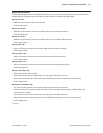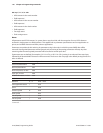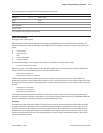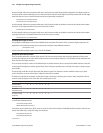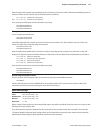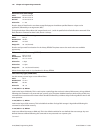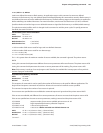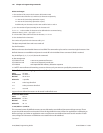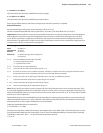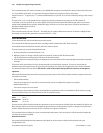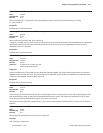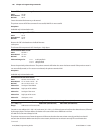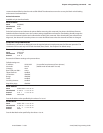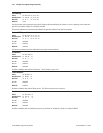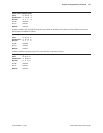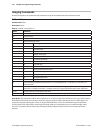
Chapter 5: Programming commands 125
A776-PG00001 C 12/09 A776 (B780) Programming Guide
n = 50 (ASCII n = 2) HEX 32
This command erases all sectors available for user data storage.
n = 51 (ASCII n = 3) HEX 33
This command erases all sectors available for permanent fonts.
Erases a page of ash memory and sends a carriage return when the operation is complete.
Related information
See command “Flash memory user sectors allocation” (1D 22 55 n1 n2).
See also command “Expanded ash memory allocation” (1D 22 80...) and “Select ash area” (1D 22 81 n).
Important: While erasing ash memory, the printer disables all interrupts, including communications. To provide feedback
to the application, the printer responds to the application when the erase is complete. After sending the erase user ash
sector (1D 40 n) command, an application should wait for the response from the printer before sending data. Otherwise,
data will be lost. If an application is unable to receive data, it should wait a minimum of ten seconds after sending the erase
user ash sector (1D 40 n) command before sending data.
User storage status (ColorPOS
®
)
ASCII GS 0x97 m n
Hexadecimal 1D 97 m n
Decimal 29 151 m n
Value of m: m species the type of stored object to
be reported:
m = 0 return the kilobytes (1024) of free user RAM,
n = 0 gets largest free block size
n = 1 gets the total size free
m = 3 return the CRC of a logo indexed by n
m = 5 return the CRC of a macro that has been stored, n = 0
m = 0 the value of n selects a return of either the largest free block or total free size, since contiguous allocation cannot
be assumed as this area is completely under user control through address parameters.
n = 0 if only one instance of an object type is allowed (macro, user data, user dened characters).
n is the item index when more than one object of type m is possible
n <= FE, see the comments about logo and character set indexes
n = FF : return a list describing all the existing items of type m
Note: When a specic item request is made, a returned CRC value of 0 0 indicates that no item is stored at that index. There
is a practically negligible possibility that a valid object will have a 0 0 CRC; if this is of concern, applications should check the
object downloaded byte sequence to verify that this is not the case (as well as store the CRC as an “ID” for the object if needed
later for return value comparisons).
Downloaded character sets are identied by integer extending the existing code page selection as enumerated in the
select international character set (= select character code table) command. The rmware standard list is incrementally
extended each time a new single or double byte set is downloaded.
Single byte downloaded fonts are selected by
m = 3 and 0x40 <= n < 0x80.
Since there are only three double-byte character sets supported, the value 0x80 / 0xA0 / 0xC0 selects the rst, second,
third downloaded double byte font respectively. In return, each downloaded double byte character band is reported
individually as 0xC0, 0xC1, 0xC2 ….for as many bands as have been dened.
Continued . . .



